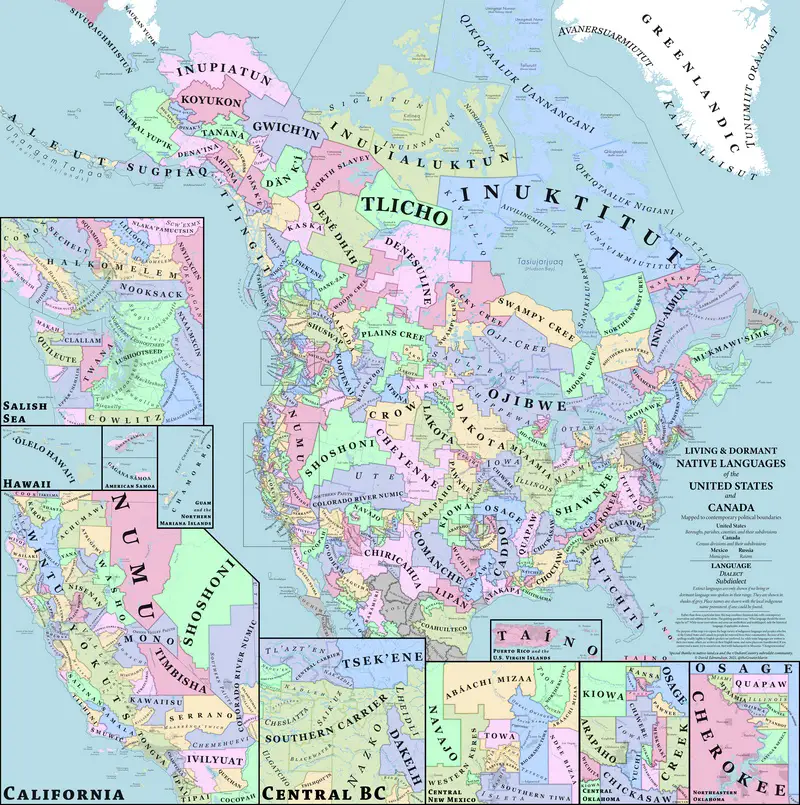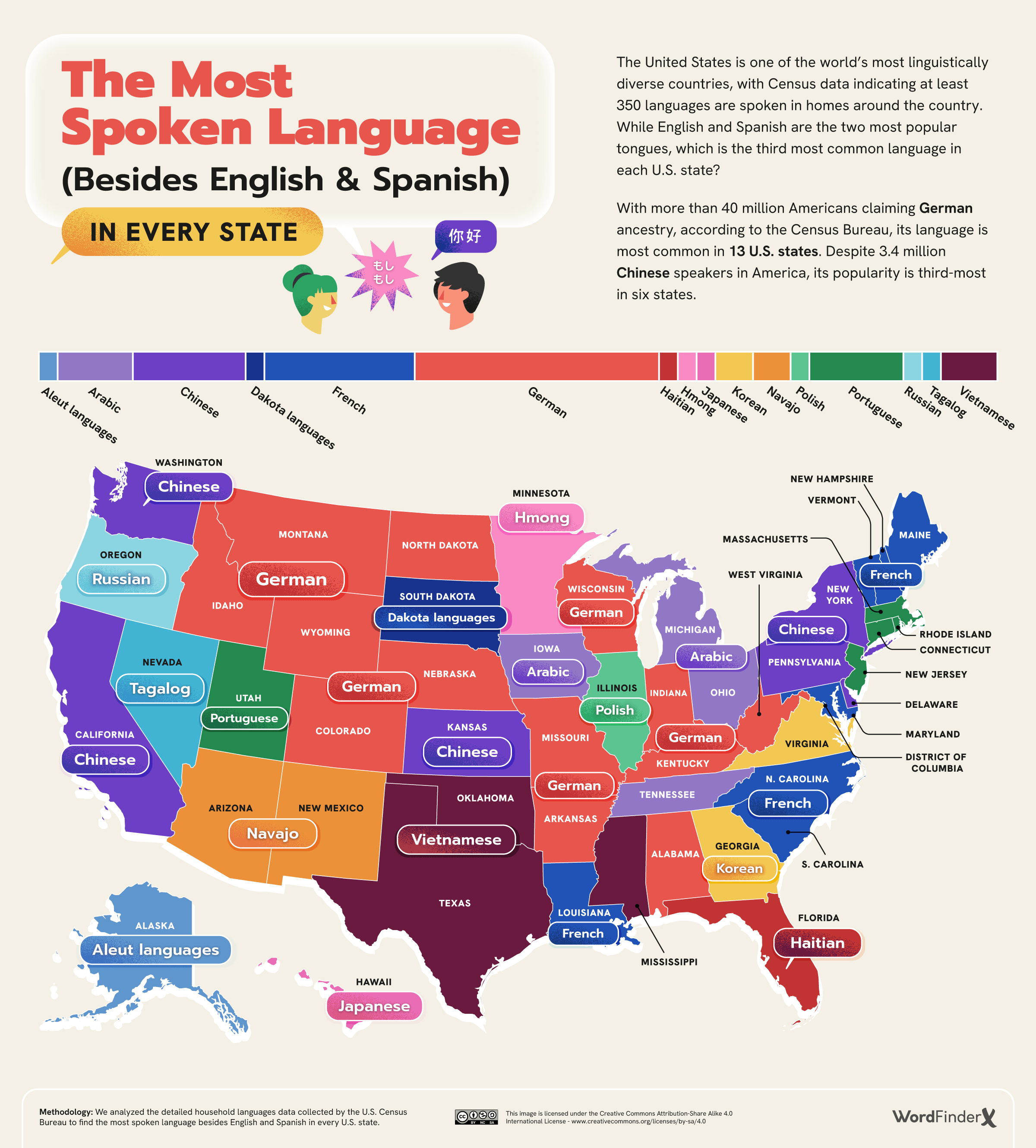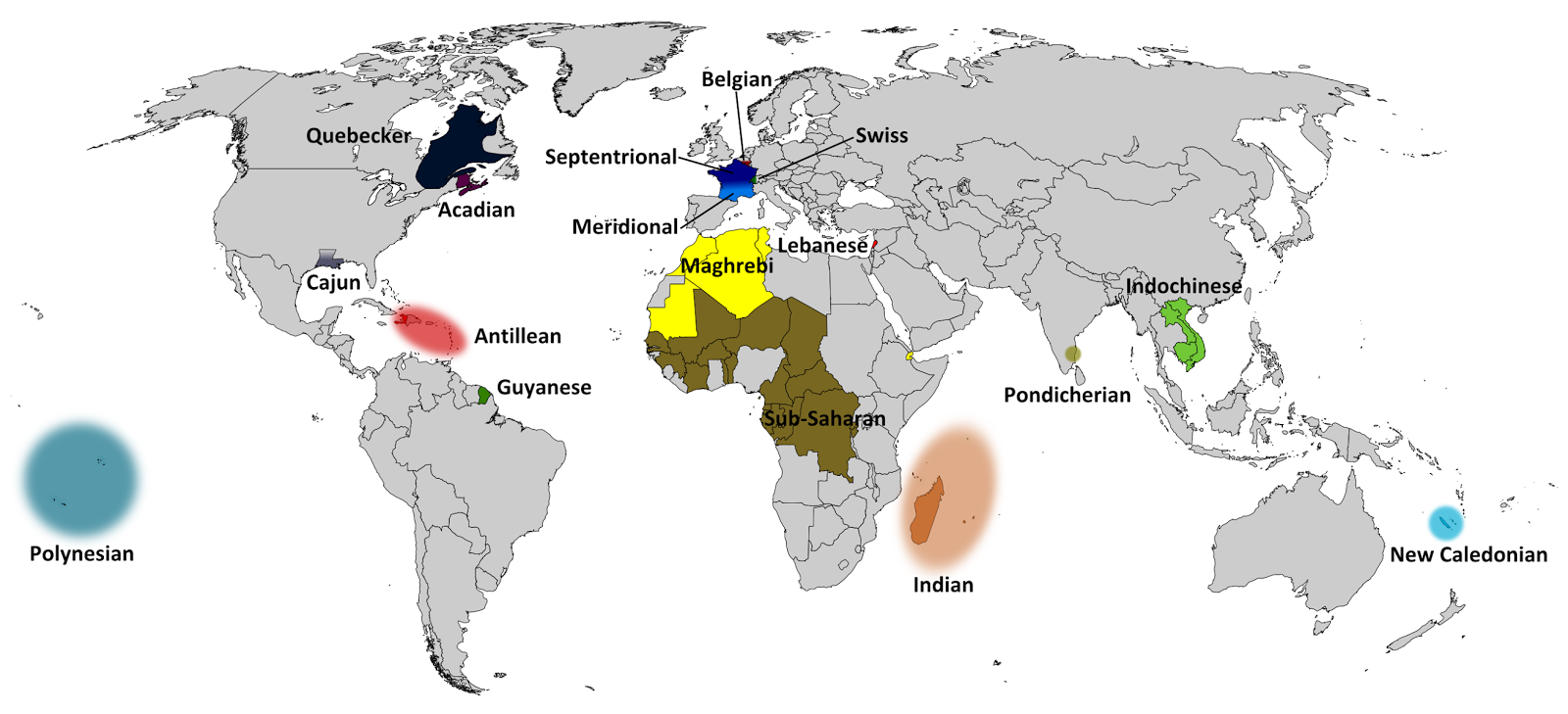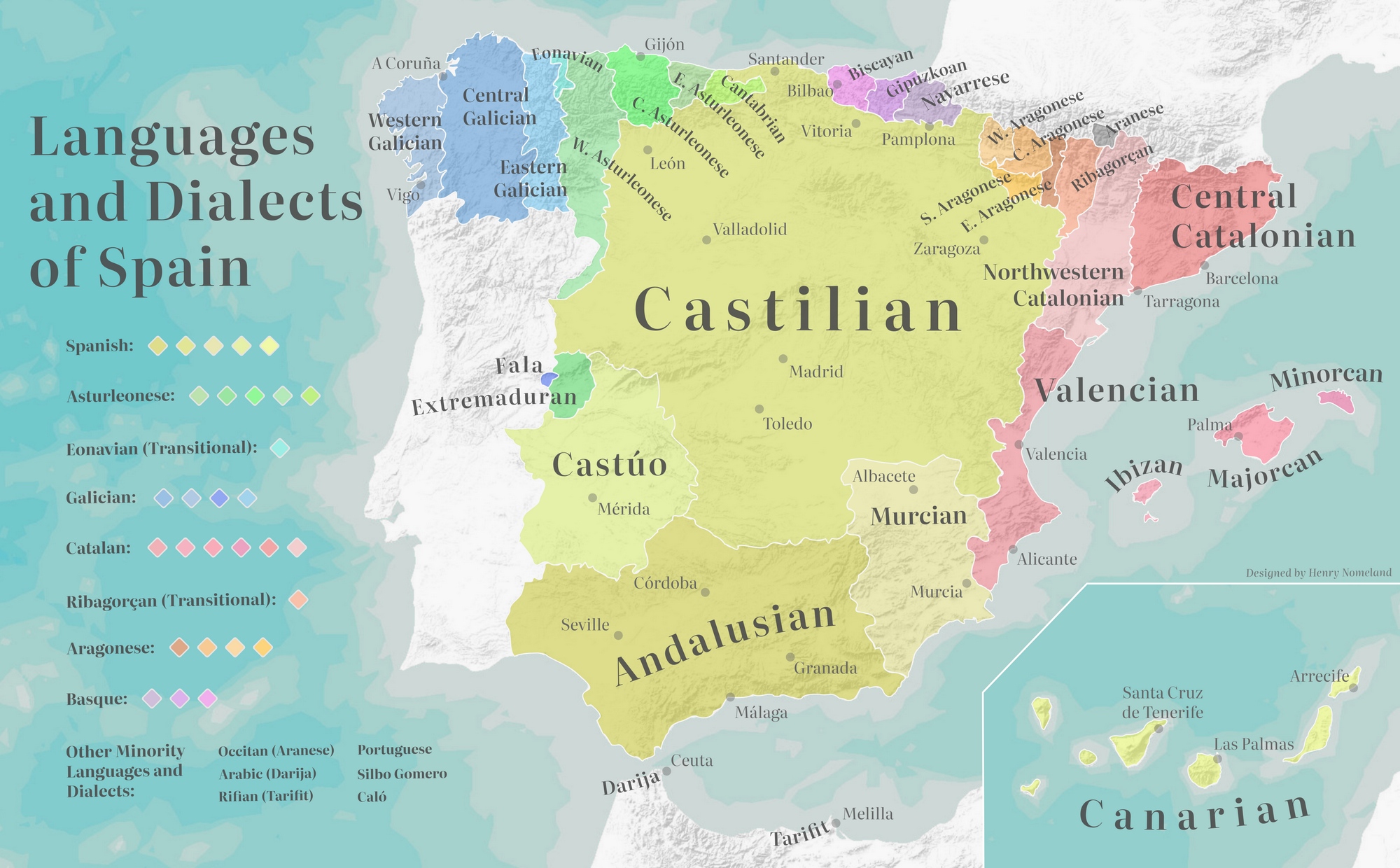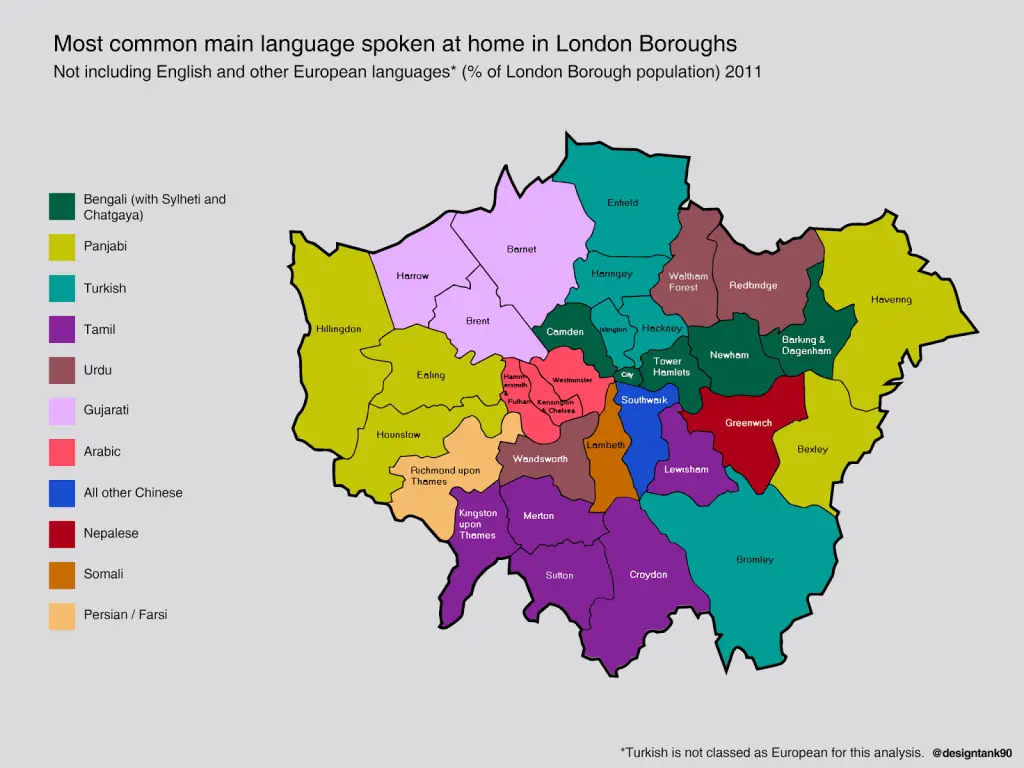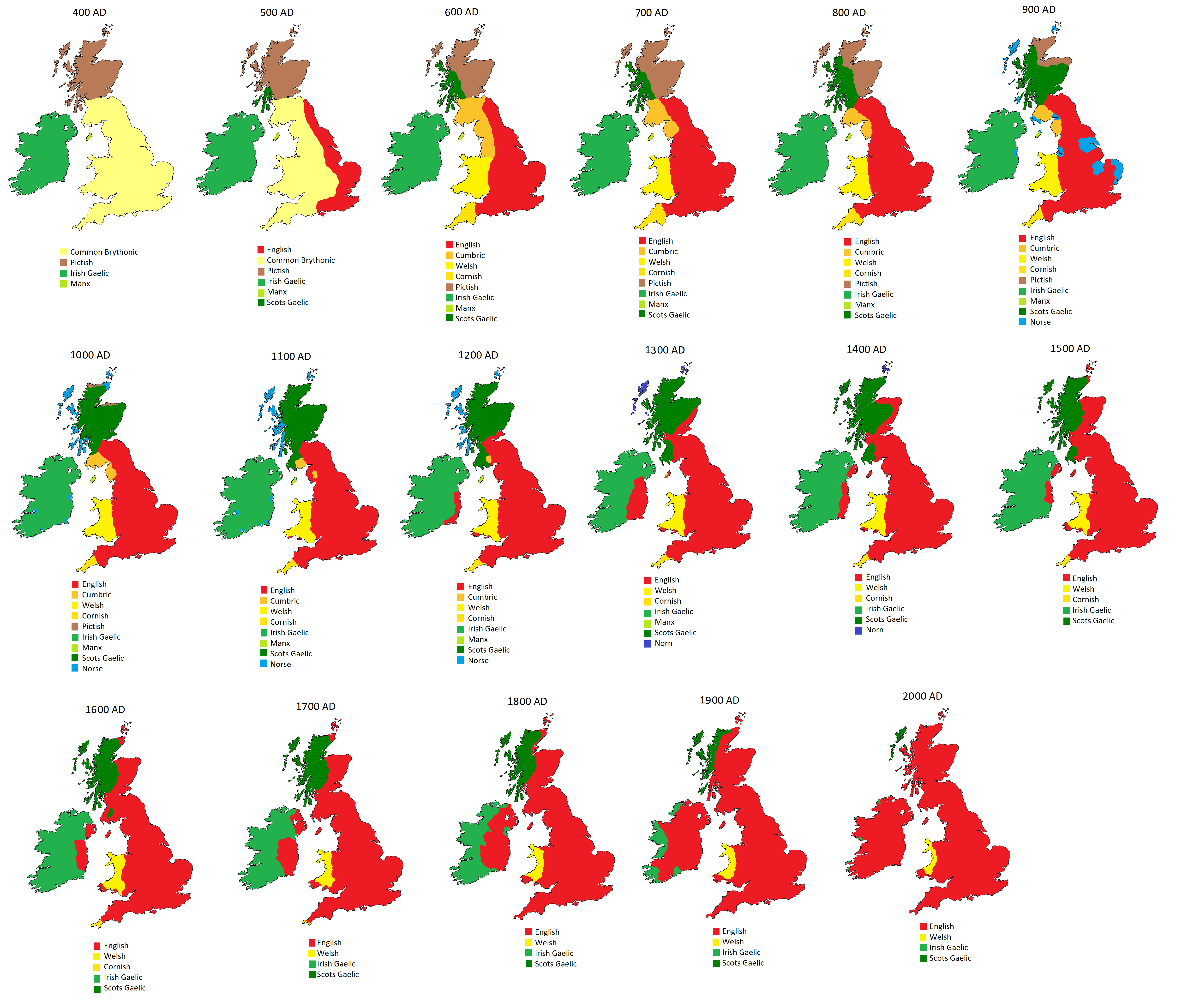Languages of North America, before European colonization
Nowadays, English, accompanied by Spanish and French, is the most generally talked language in North America. These languages were brought to North America by pioneers from Europe. But North America is the place for various language families and some language isolates.
There are approximately 296 spoken indigenous languages north of Mexico, 269 of which are grouped into 29 families (the remaining 27 languages are either isolates or unclassified). The Na-Dené, Algic, and Uto-Aztecan families are the largest in terms of several languages. Uto-Aztecan has the most speakers (1.95 million) if the languages in Mexico are considered (mostly due to 1.5 million speakers of Nahuatl); Na-Dené comes in second with approximately 200,000 speakers (nearly 180,000 of these are speakers of Navajo), and Algic in third with about 180,000 speakers (mainly Cree and Ojibwe). Na-Dené and Algic have the widest geographic distributions: Algic currently spans from northeastern Canada across much of the continent down to northeastern Mexico (due to later migrations of the Kickapoo) with two outliers in California (Yurok and Wiyot); Na-Dené spans from Alaska and western Canada through Washington, Oregon, and California to the U.S. Southwest and northern Mexico (with one outlier in the Plains). Several families consist of only 2 or 3 languages. Demonstrating genetic relationships has proved difficult due to the great linguistic diversity present in North America. Two large (super-) family proposals, Penutian and Hokan, look particularly promising. However, even after decades of research, a large number of families remain.

The map below show languages of the United States, before European colonization
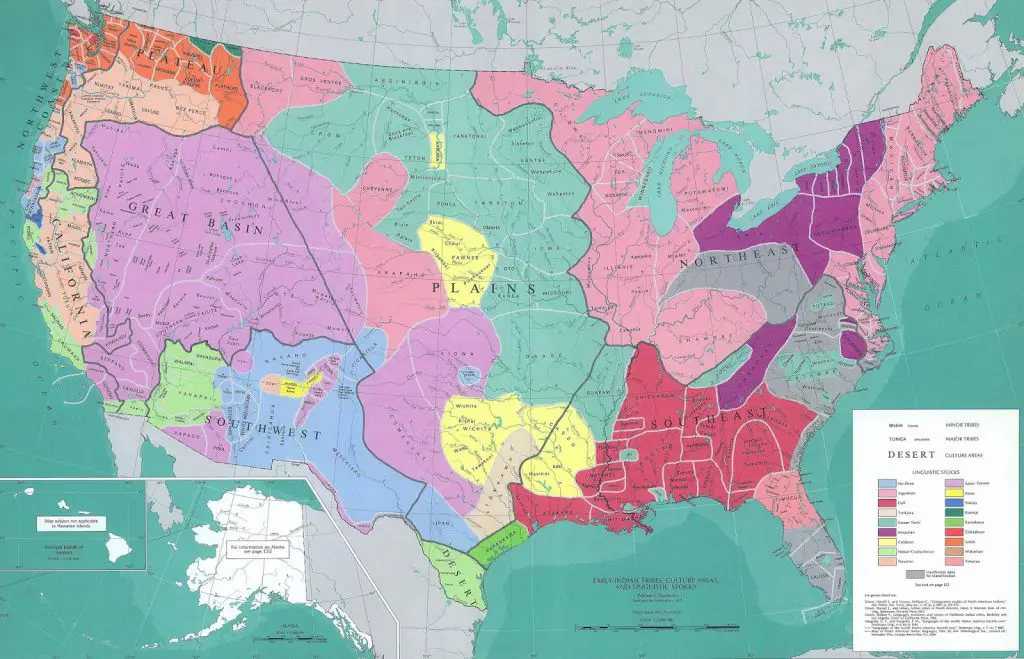
North America is notable for its linguistic diversity, especially in California. This area has 18 language families comprising 74 languages (compared to three families in Europe: Indo-European, Uralic, and Turkic and one isolate: Basque).
Another area of considerable diversity appears to have been the Southeastern U.S.; however, many of these languages became extinct from European contact, and as a result, they are, for the most part, absent from the historical record. This diversity has influenced the development of linguistic theories and practices in the United States.
Due to the diversity of languages in North America, it isn’t easy to generalize the region. Most North American languages have a relatively small number of vowels (i.e., four or five vowels). Languages of the western half of North America often have relatively large consonant inventories. The languages of the Pacific Northwest are notable for their complex phonotactics (for example, some languages have words that lack vowels entirely). The wording of the Plateau area has relatively rare pharyngeals and epiglottis (they are otherwise restricted to Afroasiatic languages and the languages of the Caucasus). Ejective consonants are also common in western North America, although they are rare elsewhere (except for the Caucasus region, parts of Africa, and the Mayan family).
The map below created by Reddit user OctaviusIII shows living languages in North America. Extinct languages are displayed in shades of grey.
Living and Dormant Languages of the United States and Canada
